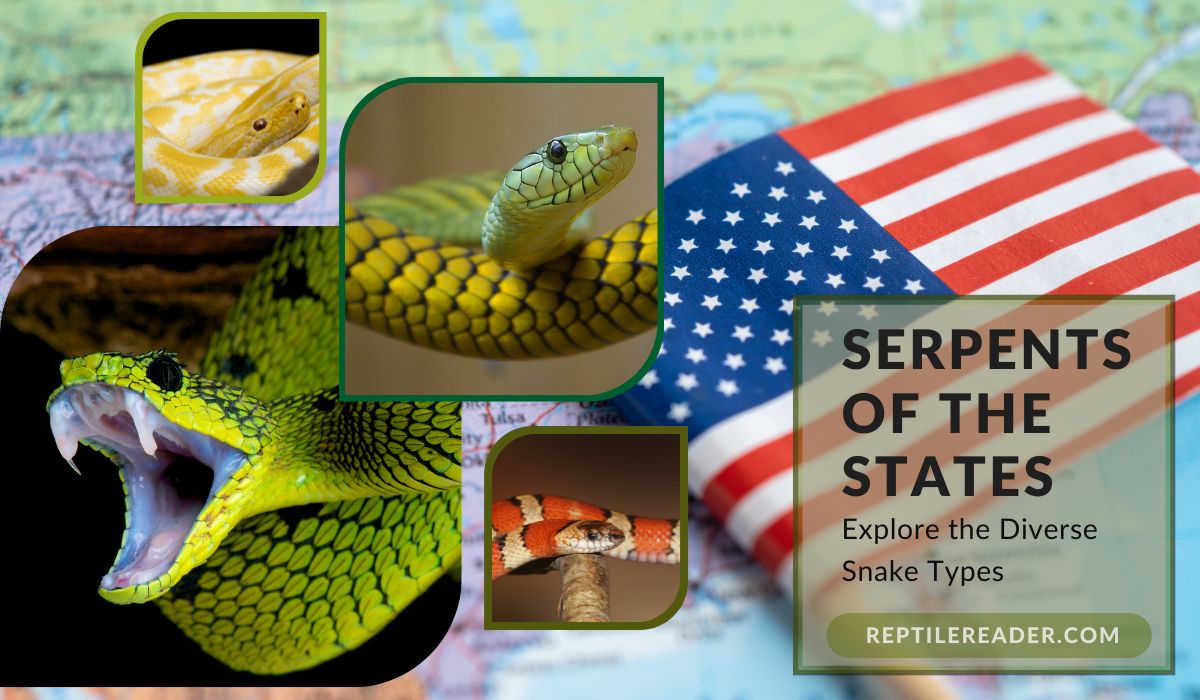Types of Snakes Found in the USA
Did you know that the U.S. is home to over 50 distinct snake species? And guess what? The state that takes the crown for the most snake species is none other than the vast and vibrant Texas! 🤠
But that’s not all—hold on tight as we unravel the venomous secrets hidden within the country’s borders. With a staggering 22 recognized species of venomous snakes and a remarkable 37 subspecies, the United States is an intriguing habitat for these enigmatic creatures.
And if you think that’s impressive, wait till you hear this: across the globe, there are a whopping 3,400 different snake species that exist. Get ready to be charmed and captivated as we embark on this journey to discover the fascinating world of snakes found right here in the USA! 🌎🐍
Entwining with the Serpent: An Overview of Snakes
If there’s one critter that gets a bad rap, it’s our slithering friends: snakes. A very misunderstood group, snakes are often portrayed as scary villains in popular culture.
But, those slippery serpents are so much more than their nasty reputation. They’re a wonderfully diverse lot, packed with fascinating facts and figures.
The Biological Basics of Snakes
Firstly, let’s talk basic biology. As we all know, snakes are reptiles. But what’s cool is that they’ve evolved over time to lose their legs. However, this doesn’t slow them down at all.
A snake’s slim, streamlined body enables them to traverse a variety of terrains with ease – from water to trees, they’re pretty good at getting around! Their forked tongues aren’t just for show, either.
They use them to ‘smell’ the air around them, helping them to navigate their surroundings and hunt for prey. Talk about a biological marvel.
Facts And Figures: Quick Stats about Snakes
| Location | Number of Snake Species |
|---|---|
| United States | 50+ |
| Mexico | 394 |
| Brazil | 384 |
| India | 350 |
| Indonesia | 339 |
| China | 241 |
| Australia | 216 |
Now, let’s get into the heavy stats. Out of over 3,400 species of snakes worldwide, approximately 50+ are indigenous to the United States – ranging from harmless ones like Garters and Rat snakes to the venomous types like the Rattlesnake.
But don’t let this fact scare you. Most snakes are harmless and only about 15% worldwide are considered dangerous to humans. One even performs a vital role of controlling the rodent population.
Categories of Snakes
Snakes can be broadly classified into four main categories based on their physical and biological attributes:
Colubrids
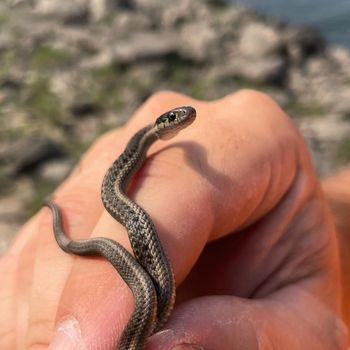
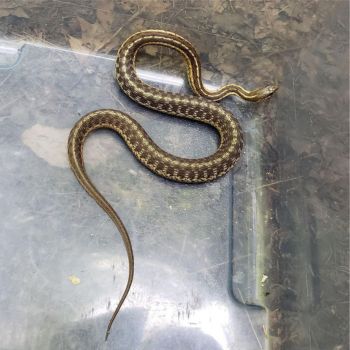
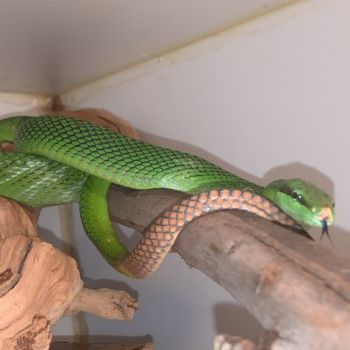
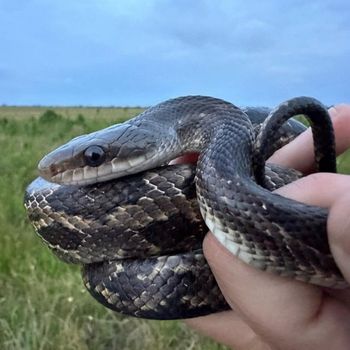
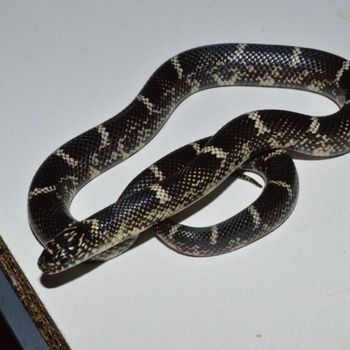
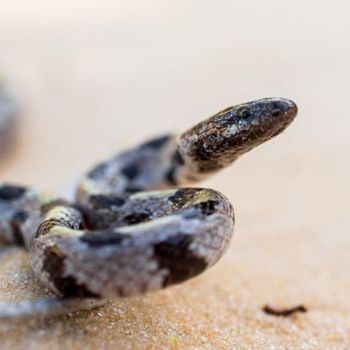
Colubrids encompass the largest family of snakes and are known for their diversity in size, habitat, and behavior. This group includes popular snake species like garter snakes, rat snakes, and king snakes.
Vipers
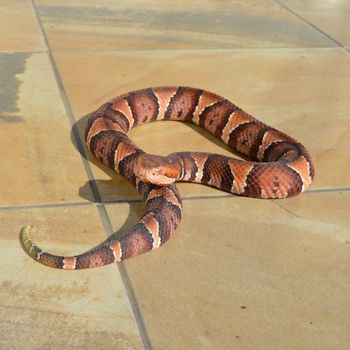
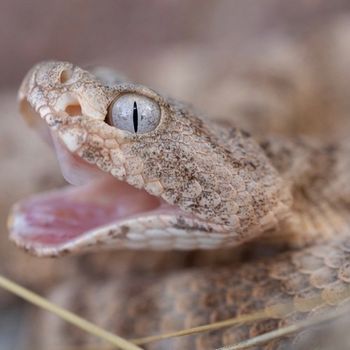


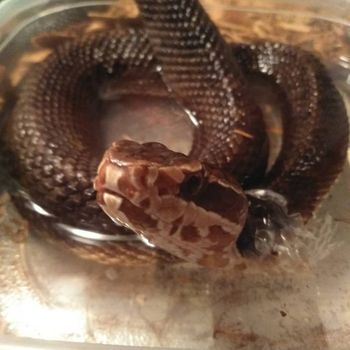
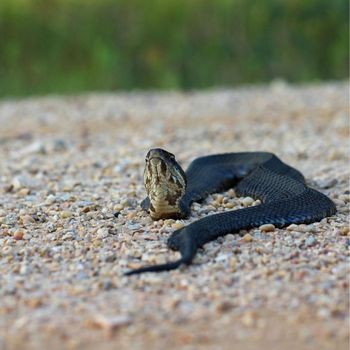
Vipers are venomous snakes that possess a pair of specialized hollow fangs used for injecting venom into their prey. Examples of vipers found in the USA include rattlesnakes, copperheads, and cottonmouths, also known as water moccasins.
Boas and Pythons

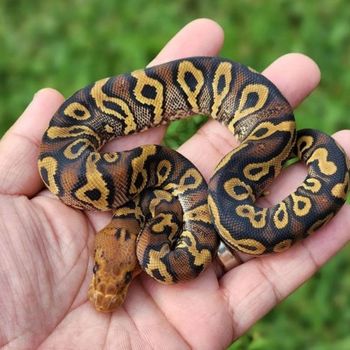
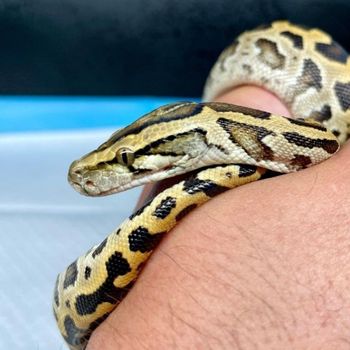
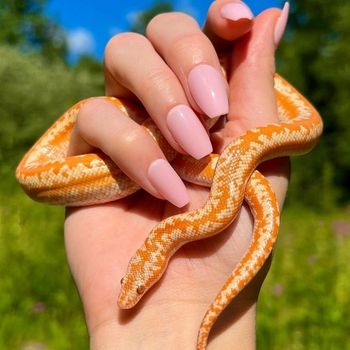
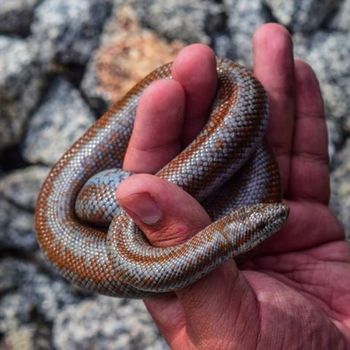
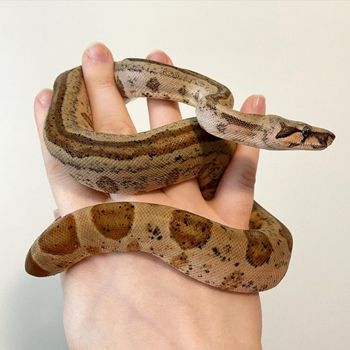
Boas and pythons are non-venomous constrictor snakes that overpower their prey by coiling their bodies around them. They include impressive species such as the Burmese python, boa constrictor, and ball python, often sought after as pets due to their unique characteristics.
Elapids
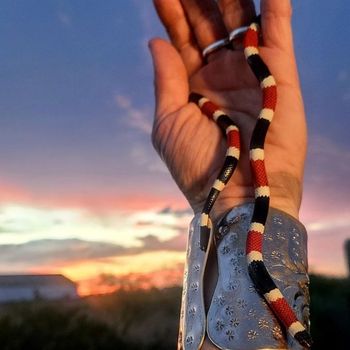
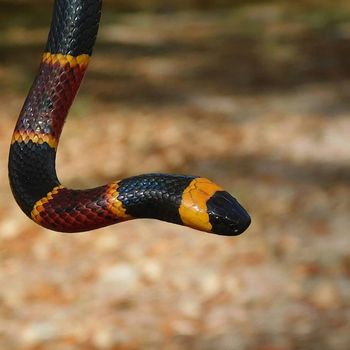
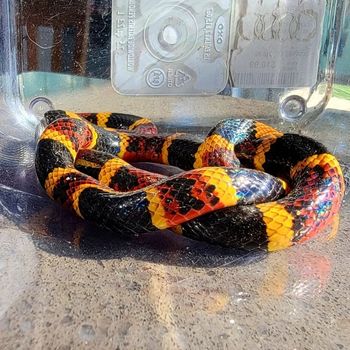
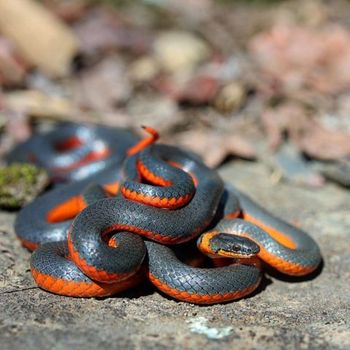
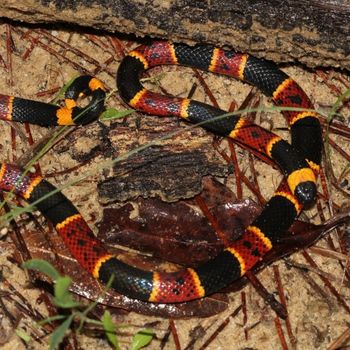
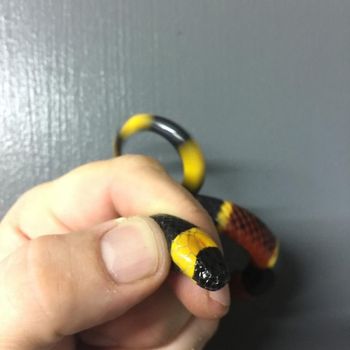
Elapids are a family of venomous snakes known for their potent neurotoxic venom. This category includes the coral snake, famous for its vibrant red, yellow, and black bands, which serves as a warning sign to potential predators.
Each of these categories presents a wide range of species, each with its own distinct traits and adaptations that make them fascinating subjects of study.
Slither into Diversity: Different Types of Snakes in the USA
The USA is gifted with an incredibly diverse range of snakes, announcing their presence in every type of environment from the highest mountains to the lowest wetlands. Truly a land of serpentine wonders!
Native Snake Species in the USA
Snakes have long been a part of the diverse wildlife found in the United States. From venomous rattlesnakes to harmless garter snakes, the native snake species in the USA display a remarkable variety of colors, patterns, and behaviors. Let’s explore some of the fascinating native snakes you can encounter across the country.
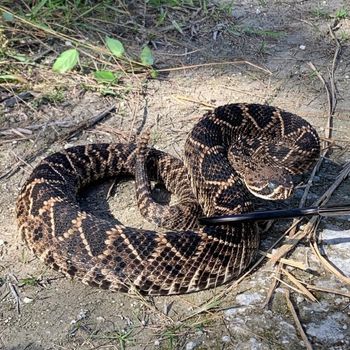
Eastern Diamondback Rattlesnake
The Eastern Diamondback Rattlesnake is a renowned and formidable snake that inhabits the southeastern parts of the USA. With its distinctive diamond-shaped markings and intimidating rattle, this venomous snake is the largest rattlesnake species in the world.
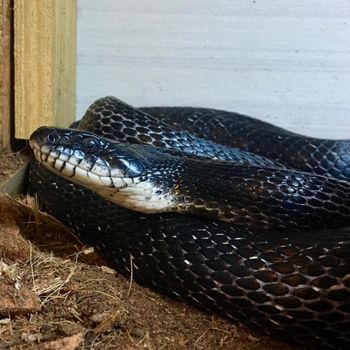
Black Rat Snake
The Black Rat Snake, also known as the Eastern Rat Snake, is a non-venomous constrictor found in various regions of the USA. This adaptable and widespread snake is known for its black coloration and impressive climbing abilities.
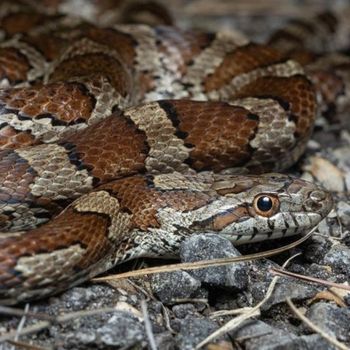
Corn Snake
The Corn Snake, with its vibrant colors and patterned scales, is a popular species among reptile enthusiasts. Native to the southeastern states, these non-venomous snakes are known for their docile nature and are often kept as pets.

Timber Rattlesnake
The Timber Rattlesnake, also called the Canebrake Rattlesnake, can be found in the northeastern and southeastern parts of the USA. This venomous snake relies on its distinctive rattling sound and camouflage to warn potential threats and blend into its environment.
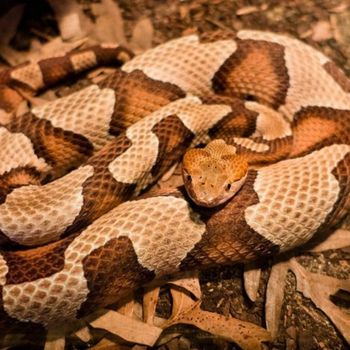
Copperhead Snake
The Copperhead Snake is a venomous pit viper that inhabits the eastern and central regions of the USA. With its copper-colored head and intricate patterned scales, this snake is both beautiful and potentially dangerous.
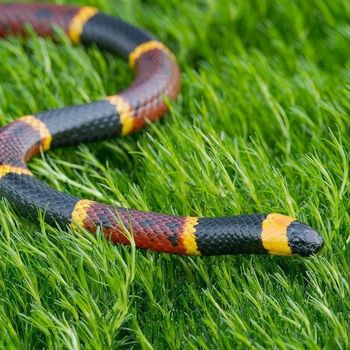
Eastern Coral Snake
The Eastern Coral Snake is a small but highly venomous snake known for its bright bands of red, yellow, and black. Found in the southeastern states, this elusive species prefers wooded areas and is generally not aggressive unless provoked.
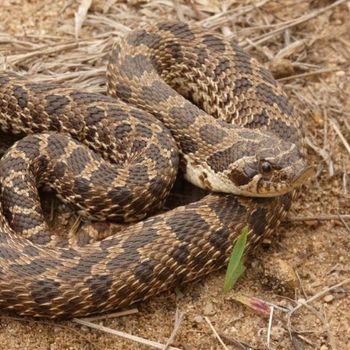
Eastern Hognose Snake
The Eastern Hognose Snake is an intriguing species known for its distinctive upturned snout. Found in various habitats across the eastern USA, this non-venomous snake has a reputation for its defensive behavior, which includes puffing up its body and even playing dead.
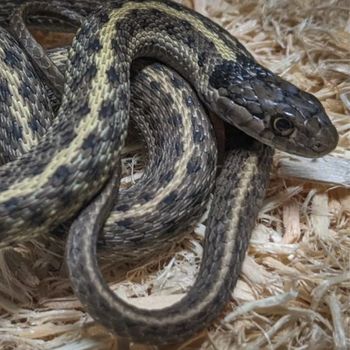
Garter Snake
Garter Snakes are among the most widespread and common snake species in North America. Found throughout the USA, these non-venomous snakes are often recognized by their long bodies, striped patterns, and remarkable ability to thrive in diverse environments.
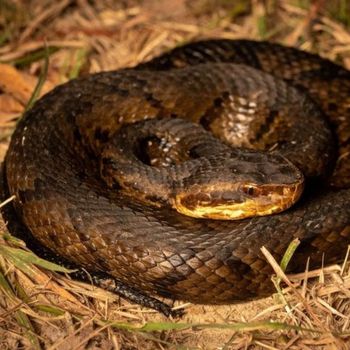
Water Moccasin
Also known as the Cottonmouth, the Water Moccasin is a venomous snake found in the southeastern parts of the USA. With its aquatic lifestyle and a distinctive white mouth lining, this snake is well adapted to marshes, swamps, and other wetland habitats.

Rat Snake
Rat Snakes, belonging to the genus Elaphe, are a group of non-venomous constrictor snakes found throughout the USA. These adaptable snakes are excellent climbers and are known for their ability to control rodent populations, making them valuable to humans.

Eastern Milk Snake
The Eastern Milk Snake is a non-venomous species known for its striking colors and resemblance to the venomous Coral Snake. Found across the eastern USA, this snake preys on small rodents and is often encountered in wooded areas or near farms.
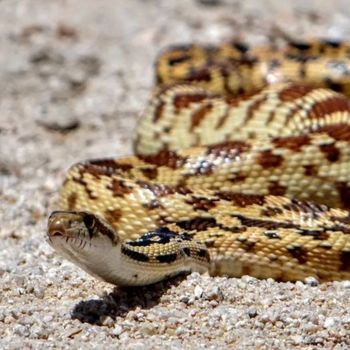
Gopher Snake
Gopher Snakes, also known as Bullsnakes, are native to the western and central regions of the USA. These non-venomous constrictors play a crucial role in rodent control and are often mistaken for rattlesnakes due to their similar appearance and defensive behaviors.
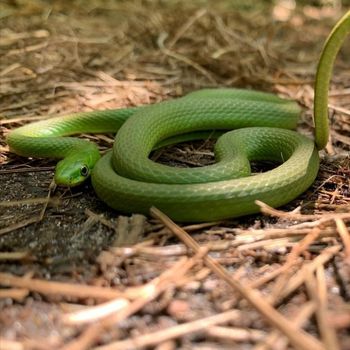
Rough Green Snake
The Rough Green Snake is a slender and harmless snake that primarily inhabits trees and shrubs in the eastern and central parts of the USA. Known for its vibrant green coloration and its preference for insect prey, this snake is a fascinating addition to the native species.
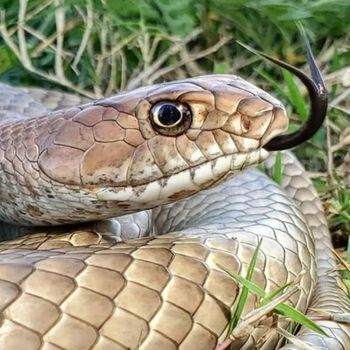
Coachwhip Snake
The Coachwhip Snake, with its long and slender body, is a fast and agile species found in various habitats across the USA. Known for its speed and tendency to escape when encountered, this non-venomous snake relies on its excellent vision and quick reflexes.
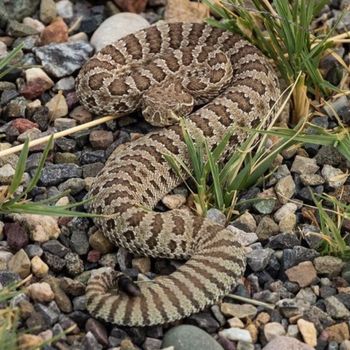
Western Rattlesnake
The Western Rattlesnake is a venomous snake that inhabits the western parts of the USA. This diverse group includes several subspecies, each with unique characteristics and adaptations to their respective environments.
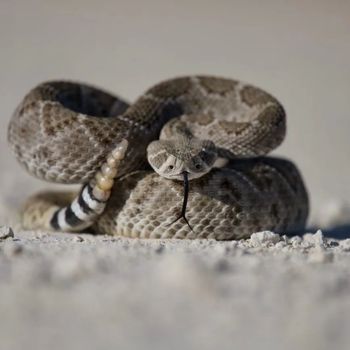
Western Diamondback Rattlesnake
The Western Diamondback Rattlesnake is one of the largest venomous snakes found in the USA. Thriving in desert and grassland habitats of the southwestern states, this rattlesnake displays impressive defensive behaviors and plays an important ecological role.
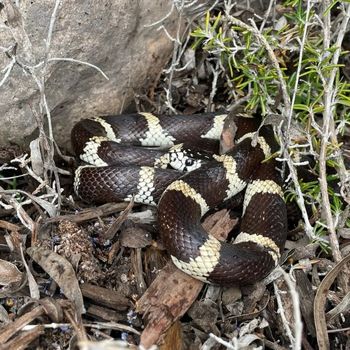
California King Snake
The California King Snake is a popular snake species known for its striking colors and docile nature. Native to the western USA, this non-venomous constrictor is valued by humans for its role in controlling rodent populations.
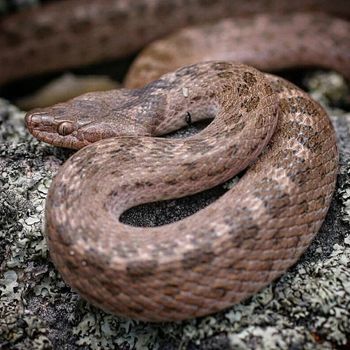
Night Snake
The Night Snake is a small and secretive species found in the southwestern parts of the USA. With its nocturnal habits and cryptic coloration, this mildly-venomous snake often goes unnoticed in rocky areas and desert habitats.
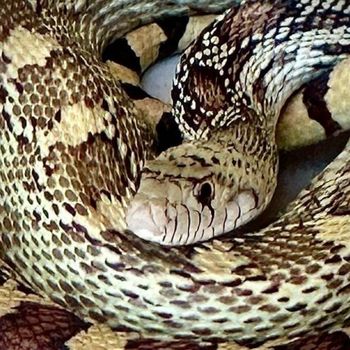
Sonoran Gopher Snake
The Sonoran Gopher Snake, native to the southwestern USA, is a non-venomous snake known for its resemblance to rattlesnakes. This adaptability allows the Sonoran Gopher Snake to thrive in various habitats, from desert landscapes to grassy plains.
These are just a few examples of the native snake species that call the USA their home. Remember, encountering snakes in the wild can be both exciting and potentially risky, so it’s important to appreciate them from a safe distance and respect their natural habitats.
Introduced and Invasive Snake Species
Now let’s delve into the intriguing world of introduced and invasive snake species found in the USA. These snakes, although not native to the country, have established populations and pose significant ecological challenges. Let’s explore some of the most notable species.

Burmese Python
The Burmese Python, native to Southeast Asia, has become a well-known invasive species in Florida. These large constrictor snakes have adapted well to the warm and humid climate of the region, leading to concerns about their impact on native wildlife.
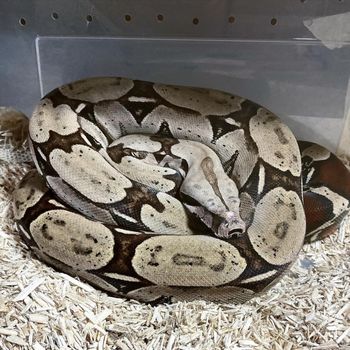
Boa Constrictor
Another prominent invasive snake species in the USA is the Boa Constrictor. Originally from Central and South America, these powerful constrictors have found their way into various states, particularly in the southern regions. They can pose a threat to small mammals and birds in their adopted habitats.
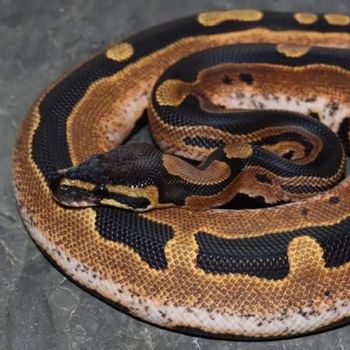
Ball Python
The Ball Python, also known as the Royal Python, is a popular pet snake originally from sub-Saharan Africa. Unfortunately, some individuals have been released or escaped, leading to established populations in certain areas. While they generally have a lower impact compared to larger constrictors, their presence in the wild is a concern.
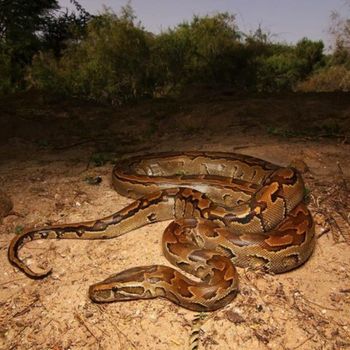
African Rock Python
The African Rock Python, one of the largest snake species in the world, has been introduced to parts of Florida. Their size and voracious appetite can have significant implications for native wildlife, especially smaller mammals and reptiles.
These are just a few examples of introduced and invasive snake species found in the USA. Their presence underscores the importance of understanding the ecological impact of non-native species and the need for effective management strategies to mitigate their potential harm.
Herpetology Hotspots: Best Places to Spot Snakes in the USA
If you have a fascination for these scaly beings and are wondering where you can get the best opportunity to observe them in their natural habitats, here are a few places in the USA that would not disappoint you!
Exploring the Everglades: A Botanical Garden of Snakes
The Everglades National Park in Florida is home to about 50 species of snakes. From the dangerous Burmese Pythons to tiny brown snakes, you’ll find it all here. Remember, this is a rich ecosystem deserving respect – look, don’t touch, and keep your distance from the constrictors!
Arizona: A Haven for Rattlesnakes
If hearing the chilling rattle of a snake sends a thrill down your spine, head to sunny Arizona. Home to 13 different species of rattlesnakes, it’s a befitting spot to do some herping. But do be careful, their bite can be extremely venomous.
Sliding through Snake Road: The Spring and Fall Migration
Yes, you read it right! There’s actually a place called Snake Road, and it’s as exciting as it sounds. This three-mile stretch in Southern Illinois is a temporary home to thousands of migrating snakes during the Spring and Fall seasons. From cottonmouths to copperheads, the varieties that slither through her are amazing. But again, caution is key – snake-spotting should be a safe experience for both humans and reptiles.
Snake Habitats in the USA by Region
When it comes to snake habitats in the United States, the country offers a diverse range of environments that cater to various snake species. From the lush forests of the Northeast to the arid deserts of the West, each region boasts unique characteristics that influence the types of snakes found within its boundaries.
Northeast Region
This region is known for its dense forests, abundant wetlands, and diverse array of wildlife. Snakes in the Northeast, including the Eastern Massasauga Rattlesnake and the Northern Water Snake, can be found in forested areas, marshes, and along the banks of rivers and streams. Click the state name below to see which snakes reside in that state:
- Snakes in Connecticut
- Snakes in Delaware
- Snakes in Maine
- Snakes in Maryland
- Snakes in Massachusetts
- Snakes in New Hampshire
- Snakes in New Jersey
- Snakes in New York
- Snakes in Pennsylvania
- Snakes in Rhode Island
- Snakes in Vermont
Midwest Region
The varied landscapes of this region provide a mix of habitats for snakes. The Eastern Milk Snake and the Western Fox Snake are among the snake species found in the Midwest, inhabiting grasslands, forests, and agricultural areas. Click the state name below to see which snakes reside in that state:
- Snakes in Illinois
- Snakes in Indiana
- Snakes in Iowa
- Snakes in Kansas
- Snakes in Michigan
- Snakes in Minnesota
- Snakes in Missouri
- Snakes in Nebraska
- Snakes in North Dakota
- Snakes in Ohio
- Snakes in South Dakota
- Snakes in Wisconsin
South Region
Snakes in the South thrive in environments such as swamps, marshes, pine forests, and coastal plains. Common snake species found here include the Eastern Diamondback Rattlesnake, the Cottonmouth (also known as the Water Moccasin), and the Corn Snake. Click the state name below to see which snakes reside in that state:
- Snakes in Alabama
- Snakes in Arkansas
- Snakes in Florida
- Snakes in Georgia
- Snakes in Kentucky
- Snakes in Louisiana
- Snakes in Mississippi
- Snakes in North Carolina
- Snakes in South Carolina
- Snakes in Tennessee
- Snakes in Texas
- Snakes in Oklahoma
- Snakes in Virginia
- Snakes in West Virginia
West Region
Snakes in the West have adapted to various habitats, including deserts, woodlands, grasslands, and even alpine regions. Some notable snake species in the West region are the Western Diamondback Rattlesnake, the California King Snake, and the Gopher Snake. Click the state name below to see which snakes reside in that state:
- Snakes in Arizona
- Snakes in California
- Snakes in Colorado
- Snakes in Hawaii
- Snakes in Idaho
- Snakes in Montana
- Snakes in Nevada
- Snakes in New Mexico
- Snakes in Oregon
- Snakes in Utah
- Snakes in Washington
- Snakes in Wyoming
Where The Snakes Can Be Found in These Regions?
Let’s explore some of the primary habitats where snakes can be found across the regions we have just metioned:
Forest and Woodland Habitats
Snakes are no strangers to the lush greenery of forests and woodlands. From the towering conifers of the Pacific Northwest to the dense deciduous forests of the East Coast, these habitats provide ample cover and food sources for many snake species.
Grassland and Prairie Habitats
In the vast grasslands and prairies of the American heartland, snakes play a vital role in maintaining the delicate balance of these ecosystems. They navigate through the tall grasses, preying on small mammals and contributing to the overall biodiversity.
Desert and Arid Habitats
Snakes have adapted remarkably well to the harsh conditions of deserts and arid regions. These habitats are home to species such as rattlesnakes and sidewinders, which have developed unique survival strategies to endure scorching temperatures and limited water resources.
Wetland and Riparian Habitats
Along the banks of rivers, lakes, and wetlands, snake populations thrive in wetland and riparian habitats. These areas provide a rich food supply and a haven for snakes like water moccasins and garter snakes, which are adept swimmers.
Mountain and Alpine Habitats
The majestic mountain ranges across the United States are not devoid of snakes either. Many snake species have adapted to the challenges of higher elevations and colder temperatures, inhabiting mountainous regions and alpine meadows.
Coastal and Marine Habitats
Snakes have also found their way into the coastal and marine environments of the United States. Along the shores, salt marshes, and mangrove forests, you can encounter snakes that have adapted to these unique habitats and even swim in the ocean.
These are just a few examples of the snake habitats found in the USA. Each habitat offers its own set of challenges and opportunities for these slithering creatures, showcasing their remarkable adaptability to various ecosystems.
Snake Behavior and Characteristics
Snakes, with their mesmerizing movements and unique characteristics, have always captured the imagination of both nature enthusiasts and casual observers. Let’s delve into the intriguing world of snake behavior and explore the fascinating traits that make them such remarkable creatures.
Camouflage and Coloration
One of the most fascinating aspects of snakes is their ability to blend seamlessly into their surroundings through camouflage. Many snake species have evolved distinct color patterns and markings that enable them to hide from predators or ambush their prey.
Whether it’s the intricate scales of the Eastern Coral Snake or the mottled pattern of the Gopher Snake, each species has its own unique way of utilizing camouflage to its advantage.
Movement and Locomotion
Snakes exhibit a diverse range of movements and locomotion methods. While most people associate snakes with slithering, their movement is far more intricate than meets the eye.
Using their specialized body structure, snakes can propel themselves forward by flexing their powerful muscles and pushing against the ground or other objects. Some snakes, such as the sidewinder, even employ sidewinding or serpentine movements to navigate sandy or slippery surfaces with ease.
Feeding Habits
Snakes have a remarkable variety of feeding habits, with their diet primarily consisting of other animals.
From small rodents and birds to lizards and amphibians, snakes display an impressive adaptability in their prey choices. Some snakes are constrictors, using their powerful bodies to suffocate and subdue their prey, while others are venomous, injecting potent toxins to immobilize their victims.
The feeding habits of snakes play a crucial role in maintaining the balance of various ecosystems.
Reproduction and Life Cycle
The reproductive strategies of snakes vary greatly among different species. While some snakes lay eggs, like the Eastern Diamondback Rattlesnake and the Corn Snake, others give birth to live young, such as the Water Moccasin and the Timber Rattlesnake.
Snakes employ fascinating courtship rituals, which can involve intricate dances or battles between males to win the attention of females. Understanding the intricacies of snake reproduction provides valuable insights into their population dynamics and survival strategies.
Defense Mechanisms
Snakes have evolved an array of defense mechanisms to protect themselves from potential threats. Some species rely on their cryptic coloration and motionlessness to go unnoticed, while others resort to more active means of defense.
Venomous snakes, like the Eastern Coral Snake and the Western Diamondback Rattlesnake, possess venom that serves both as a weapon for subduing prey and as a deterrent against predators.
Non-venomous snakes, on the other hand, may employ hissing, puffing up their bodies, or mimicking more dangerous species to ward off potential threats.
Conservation Connections: Snakes and Ecosystem Balance
Now that we’ve swept through the windy roads of snake diversity and habitats, it’s time to delve into a critical subject. You might squirm with thoughts of snakes slithering in the grass, but did you know they play a pivotal role in maintaining the ecosystem?
Indeed, the very health of our natural environment depends heavily on these fascinating critters.
The Impact of Snakes on Ecological Health
Just the sight of a snake might send us leaping for higher ground, but their role in the ecosystem is far from something to be scared of. Snakes are real-life heroes of indirect pest control.
As both predators and prey, snakes fit snugly into the food chain, controlling overpopulation of their prey such as rodents and, in turn, providing a substantial meal for larger predators. Without them, we’d likely face a swift kick of the eco-balance.
Also, snakes further help fertilize the earth through their droppings—a not-so-glamorous but important contribution to soil health.
Snake Conservation: What’s Being Done?
Unfortunately, like many vital players in our ecosystems, snake populations are under threat largely due to habitat destruction, climate change, and direct persecution from misguided fear and myths.
However, hopeful initiatives are budding. From local communities to global organizations, efforts are branching out to conserve these vital creatures.
Dedicated research is being conducted to understand better the current status of snake populations. Regulations have been implemented to restrict trafficking of snakes and their products.
Many rehabilitation and rescue centers provide care for injured and rescued snakes before releasing them back into the wild. And last, but not least, you—the public—are being engaged through education about the importance of snakes and safe interaction measures.
The battle is on to save these slithering saviors of ecosystem balance, and every little help counts!
What to Do If You Encounter a Snake in the U.S
Here’s what you need to do when you cross paths with a snake in the U.S:
Don’t Freak Out
It’s natural to feel startled but remember panicking can make things worse. Take a deep breathe and compose yourself.
Don’t Provoke It
This might seem like common sense but seriously, don’t attempt to poke, prod, or piss off the snake. They’re likely to get defensive and that’s the last thing you want.
Maintain Distance
Keep a safe distance of at least 6 feet. Even if it’s a non-venomous snake, it’s good practice to stay away since some non-venomous snakes can mimic venomous ones!
Nicely Back Away
Now, without making any sudden movements or annoying the snake, carefully step back. Remember to keep an eye on the snake as you retreat.
Leave It Alone
Once you are at a safe distance, just let the snake get on with its day. They generally want nothing to do with people.
Contact a Professional If Needed
If you find the snake in a position that could endanger others, or it’s unwelcome in your home or property, call a professional wildlife removal service.
Take Steps If Bitten
Hold up, if you are very unlucky and ended up being bitten, then immediately get medical attention. Try to remember the color and shape of the snake, as it can help the medical staff with treatment, just don’t waste a lot of time doing so.
In most cases, snakes are more afraid of you than you are of them. So, following these steps will help ensure both you and the snake can move along safely.
Conclusion
The United States is home to a diverse array of snake species, each with its own unique characteristics and habitats. From venomous rattlesnakes to harmless garter snakes, these reptiles can be found in various regions across the country.
Whether in the desert, grasslands, swamps, or even urban areas, snakes play a vital role in the ecosystem and continue to fascinate both researchers and nature enthusiasts alike.

